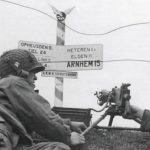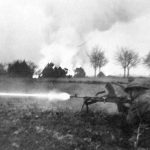Driel ferry in German hands: not an easy crossing for the Polish Brigade
On Thursday morning at 4:30 am, General Urquhart had confirmed to headquarters that the Westerbouwing was in British hands and that the Driel ferry, with a mooring at the Westerbouwing, could be used later that day by the Poles to enter the British lines from Driel. to strengthen Oosterbeek. Things, like almost everything during Operation…

















